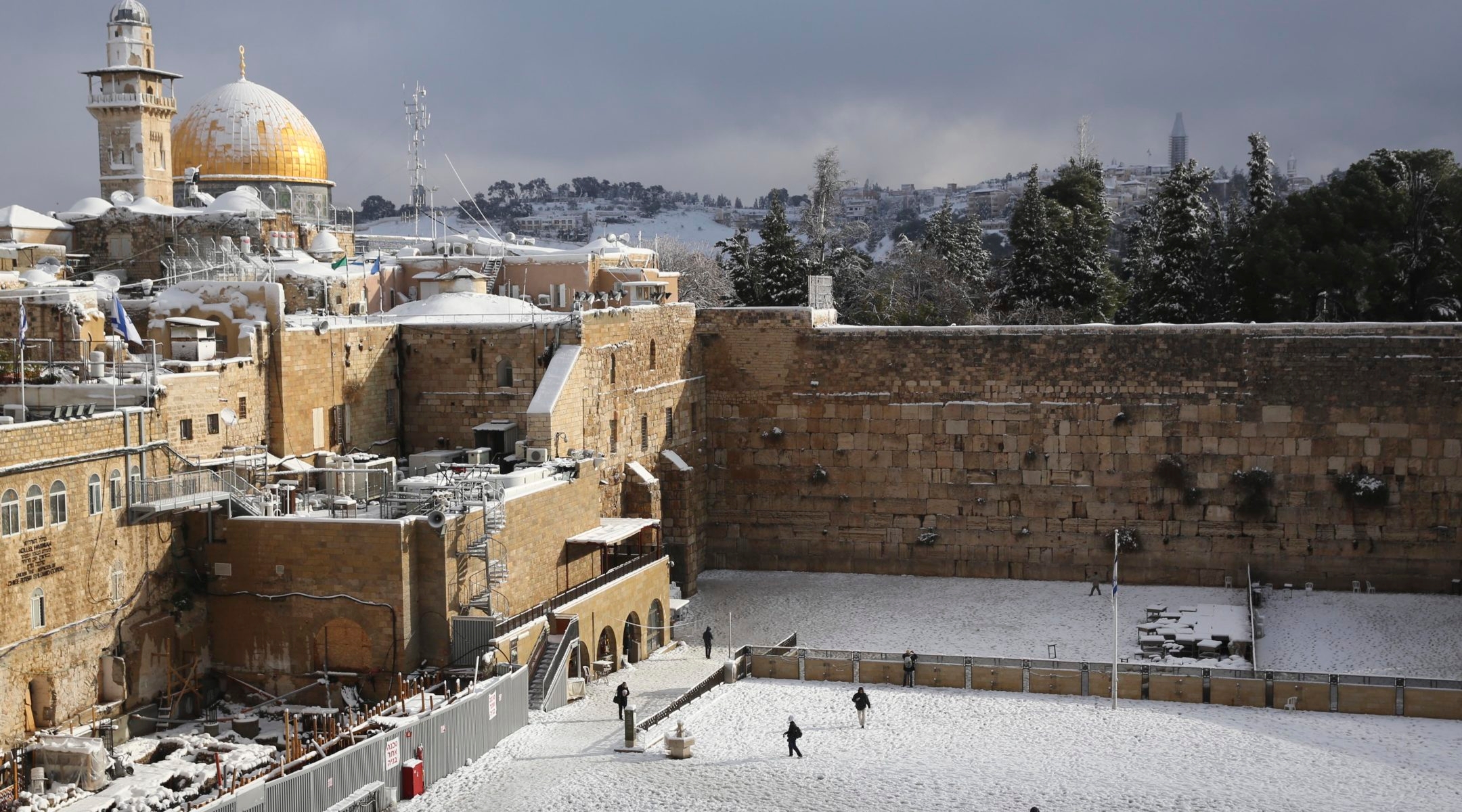When snow falls in Jerusalem, as happened this past week, the world takes heed. But as unusual as it may seem, snowfall in Jerusalem is a semi-regular occurrence. It doesn’t happen every winter, but it happens with some frequency, as a look through the JTA Archive shows.
Going back to the 1920s, the JTA Archive features reports on snowfall in Jerusalem about two to four times a decade. Still, such reports occasionally referred to snow in the holy city as a “rarity.”
A 1934 JTA report by Julian Meltzer described at length the transformation of the holy city into a winter wonderland:
Jewish urchins and Arab ragamuffins had their first real outdoor occasion since 1927, the date of the last heavy snowfall. Internecine or inter-racial combat raged merrily up and down the streets for hours, and shrewd victories were won or crushing defeats suffered, whichever side had the most snowpiles at its command and sufficient elbow-strength to wield. As usual, some over-enterprising youths got stones mixed up in their white globes, and they will probably face a law court for it.
…
What struck visitors to Jerusalem as the most exciting part of the event was the juxtaposition of typical and familiar Oriental sights against the uncanny whiteness, “covering a multitude of tins,” one wag said in reference to But el Tenek, or Shanty-Town, west of Jerusalem, where the huts are roofed with corrugated iron or plain oil cans. The stately camels disdainfully picking their way along the slippery roads, wondering at this new creation of unfathomable man and determined majestically to ignore it, followed by bewildered Bedouins in from the desert unclothed to meet the cold spell; the ornamental palmtrees in Jerusalem gardens, and the pines and cypress, burdened with glistening icicles and particles of white, brushing off to a shower at the slightest movement; the mantle of snow over the Temple Area, at the southeast corner of the Old City as viewed from that ideal coign of vantage, the rooftop of the Jewish National and University Library on Mount Scopus; and that other incomparable panorama from the University of Mount Scopus, the Magnificent contrast between the mist-covered, white-shrouded Jerusalem and Judean hills and the clear-cut, gaunt, brown and stark outline of the Wilderness of Benjamin, the Jericho foothills, and the massive Moab range on the horizon.
What a land! What a land!
People commuted from Tel Aviv to see the wonder with their own eyes, suspecting the local Hebrew press of mirthful exaggeration. And many of them took the next bus or train back, because it was too cold, for their experience of temperate climate. Ladies brought out foxes and furs and muffs and bear-hates, and one dainty creation appeared all in white as the snowlady. Local modistes flung their heart and soul into new window decorations, particularly the enterprising newcomers from Hitlerland. Many German Jews, newly arrived here, went about chuckling and briskly rubbing their hands and stamping their feet — this, at least, was a reminder of their former country which they did not mind having accentuated.
As it did this past week, snow in Jerusalem often involves some hardships: roads shut down, electricity knocked out and people stranded. Sometimes it has brought catastrophe, as in 1992 when an earlier snowstorm was blamed for causing a landslide that killed at least 23 at an Arab cafe in eastern Jerusalem.
But snow can also bring good things. Occasionally, snow has even cooled conflicts between Jews and Arabs. A 1934 snowfall chilled Arab demonstrations that had been feared as having the potential to stir up anti-Jewish violence. And in 1948, during Israel’s War of Independence, a snowfall brought a lull in fighting to the country.
Two stories from 1950 capture how winter storms in Israel can be a cause for both wonder and tragedy: JTA reported on Yemenite immigrants who saw their first snowfall, and shortly thereafter it noted the four Yemenite Jews who were killed when snow caused the mess hall in their immigration camp to collapse.






